Featured image credit: SpaceX
Lift Off Time | December 19, 2021 – 03:58 UTC December 18, 2021 – 22:58 EST |
|---|---|
Mission Name | Türksat 5B |
Launch Provider | SpaceX |
Customer | Türksat A.Ş. |
Rocket | Falcon 9 Block 5 B1067-3; 38 day turn around time |
Launch Location | Space Launch Complex 40 (SLC-40), Cape Canaveral Space Force Station, Florida, USA |
Payload mass | 4,500 kg (9,900 lb) |
Where did the satellites go? | Geostationary Transfer Orbit (GTO) |
Did they attempt to recover the first stage? | Yes |
Where did the first stage land? | ~620 km downrange on A Shortfall of Gravitas Tug: Finn Falgout; Support: Bob |
Did they attempt to recover the fairings? | SpaceX attempted fairing recovery ~665 km downrange by Bob; outcome TBD |
Were these fairings new? | No, the active and passive halves both flew on the GPS III SV05 mission; 185 day turn around time |
This was the: | – Shortest time between two SpaceX launches at 15 hours 17 min – 133rd Falcon 9 launch – 74th Falcon 9 flight with a flight proven booster – 78th re-flight of a booster – 29th re-flight of a booster in 2021 – 99th booster landing – 25th consecutive successful landing (a record) – 30th launch for SpaceX in 2021 (a record) – 77th SpaceX launch from SLC-40 – 134th orbital launch attempt of 2021 |
Where to watch | Official Replay |
How Did It Go?
SpaceX successfully launched the Türksat 5B into a Geostationary Transfer Orbit (GTO) atop a Falcon 9 Block 5 rocket. Türksat 5B lifted off from Space Launch Complex 40 (SLC-40) at the Cape Canaveral Space Force Station in Florida. This mission is a follow up to the Türksat 5A mission, which launched in 2021.
Türksat 5B satellite
Türksat 5B is a Turkish communication satellite built by Airbus Defense and Space. The satellite, which is operated by Türksat, will provide direct TV broadcasting services and general telecommunication services to Turkey, Europe, the Middle East, and parts of Asia and Africa. Türksat 5B will operate in Geostationary Orbit (GEO) at 42° East inclination.
Türksat 5A is based on the Eurostar-3000EOR satellite bus. The bus is equipped with two deployable solar arrays which in combination with batteries provide the satellite with over 15 kW of power. This will make Türksat 5B the most powerful satellite in Türksat’s fleet. In fact, due to this large amount of power the satellite is fully electric and uses ion propulsion. Türksat 5A is equipped with 42 Ku band transponders and has a lifespan of 15 years.
What Is Falcon 9 Block 5?
The Falcon 9 Block 5 is SpaceX’s partially reusable two-stage medium-lift launch vehicle. The vehicle consists of a reusable first stage, an expendable second stage, and, when in payload configuration, a pair of reusable fairing halves.
First Stage
The Falcon 9 first stage contains 9 Merlin 1D+ sea level engines. Each engine uses an open gas generator cycle and runs on RP-1 and liquid oxygen (LOx). Each engine produces 845 kN of thrust at sea level, with a specific impulse (ISP) of 285 seconds, and 934 kN in a vacuum with an ISP of 313 seconds. Due to the powerful nature of the engine, and the large amount of them, the Falcon 9 first stage is able to lose an engine right off the pad, or up to two later in flight, and be able to successfully place the payload into orbit.
The Merlin engines are ignited by triethylaluminum and triethylborane (TEA-TEB), which instantaneously burst into flames when mixed in the presence of oxygen. During static fire and launch the TEA-TEB is provided by the ground service equipment. However, as the Falcon 9 first stage is able to propulsively land, three of the Merlin engines (E1, E5, and E9) contain TEA-TEB canisters to relight for the boost back, reentry, and landing burns.
Second Stage
The Falcon 9 second stage is the only expendable part of the Falcon 9. It contains a singular MVacD engine that produces 992 kN of thrust and an ISP of 348 seconds. The second stage is capable of doing several burns, allowing the Falcon 9 to put payloads in several different orbits.
For missions with many burns and/or long coasts between burns, the second stage is able to be equipped with a mission extension package. When the second stage has this package it has 0 a grey strip, which helps keep the RP-1 warm, an increased number of composite-overwrapped pressure vessels (COPVs) for pressurization control, and additional TEA-TEB.
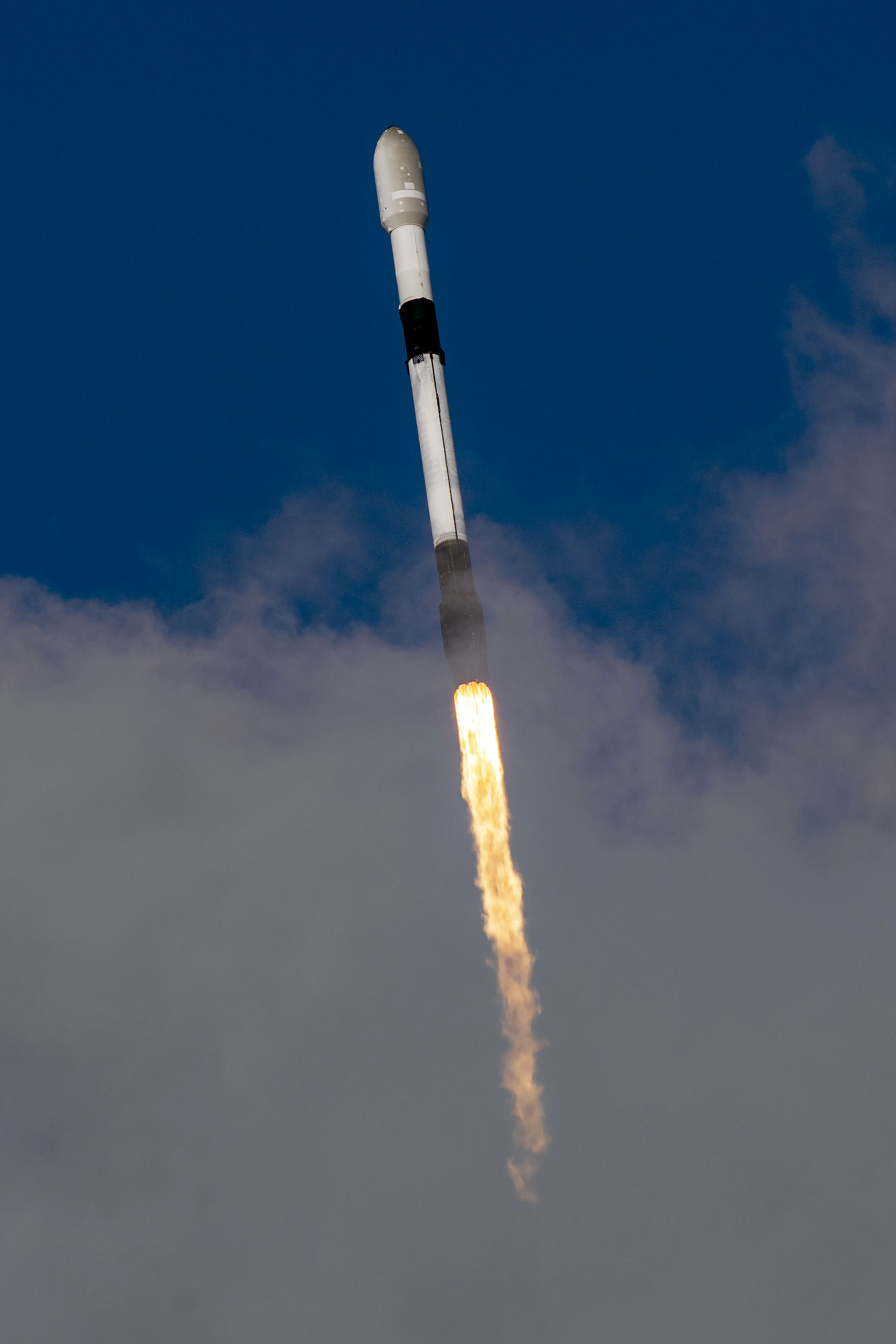
Falcon 9 Booster
The booster that supported Türksat 5B is B1067. It had supported two previous missions: CRS-22 and Crew-3. Since it has flown two previous times, this mission changed its designation to B1067-3.
Following stage separation, the Falcon 9 conducted 2 burns. These burns softly touched down the booster on SpaceX’s autonomous spaceport drone ship A Shortfall of Gravitas.
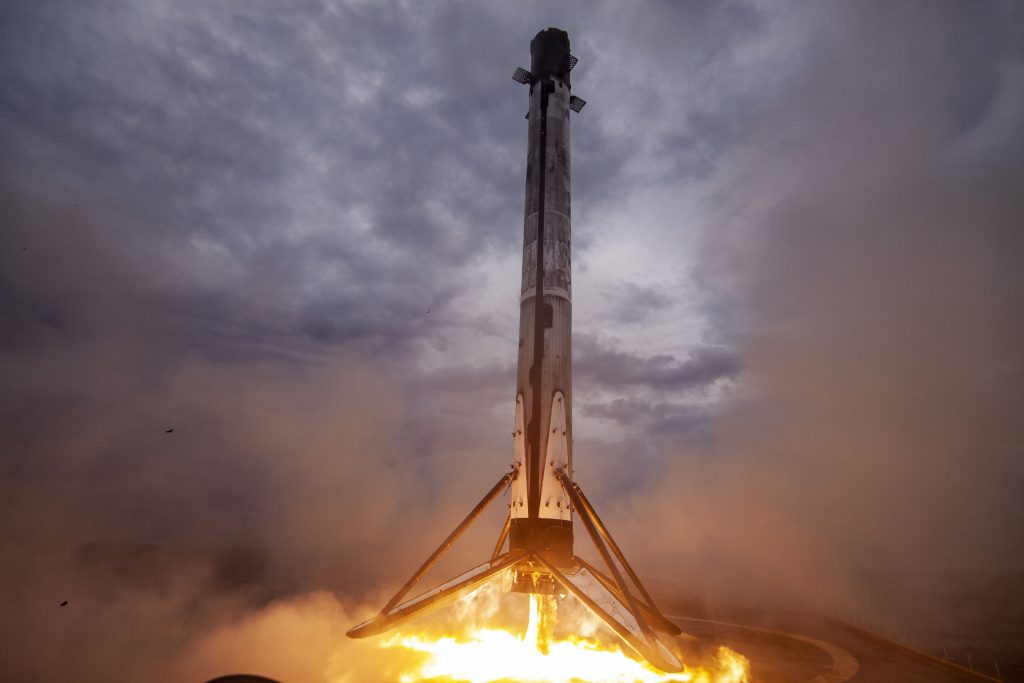
Falcon 9 Fairings
The Falcon 9’s fairing consists of two dissimilar reusable halves. The first half (the half that faces away from the transport erector) is called the active half, and houses the pneumatics for the separation system. The other fairing half is called the passive half. As the name implies, this half plays a purely passive role in the fairing separation process, as it relies on the pneumatics from the active half.
Both fairing halves are equipped with cold gas thrusters and a parafoil which are used to softly touch down the fairing half in the ocean. SpaceX used to attempt to catch the fairing halves, however, at the end of 2020 this program was canceled due to safety risks and a low success rate. On Türksat 5B, SpaceX attempted to recover the fairing halves from the water with their recovery vessel Bob.
In 2021, SpaceX started flying a new version of the Falcon 9 fairing. The new “upgraded” version has vents only at the top of each fairing half, by the gap between the halves, whereas the old version had vents placed spread equidistantly around the base of the fairing. Moving the vents decreases the chance of water getting into the fairing, making the chance of a successful scoop significantly higher.
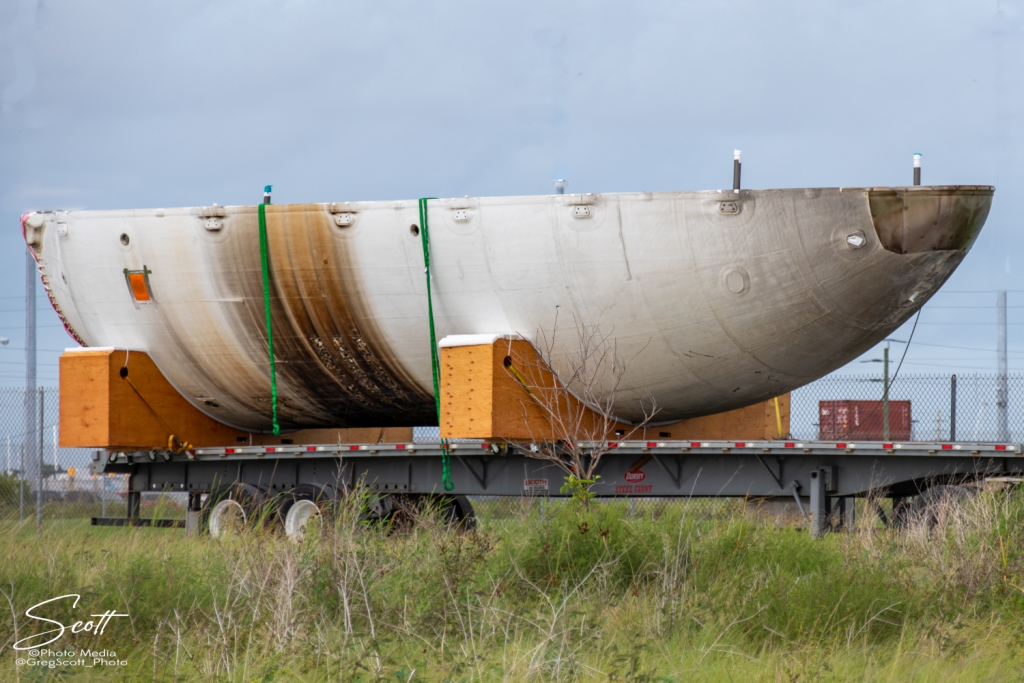
An active Falcon 9 fairing half (Credit: Greg Scott) 
Falcon 9 passive fairing half (Credit: Greg Scott) 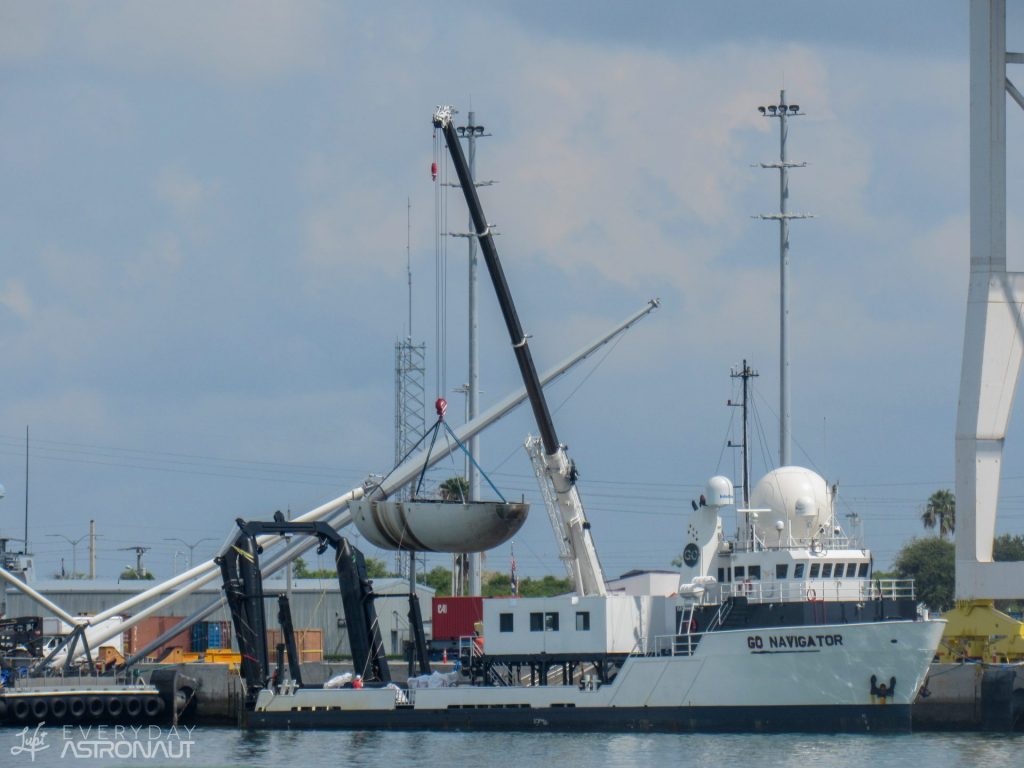
Half of the fairing being taken off Go. Navigator. (Credit: Lupi) 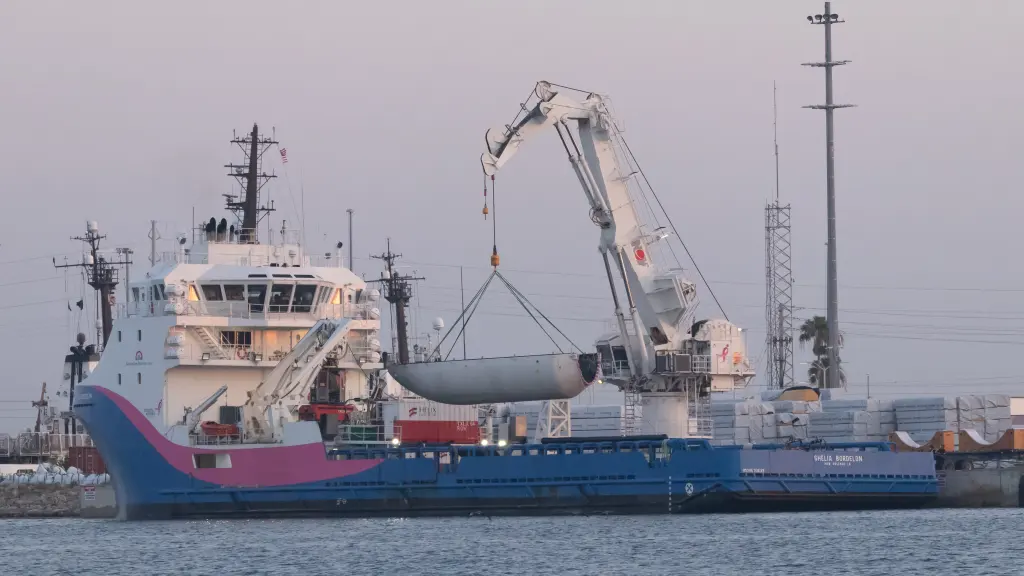
A passive fairing half being unloaded from Shelia Bordelon after the Starlink V1.0 L22 mission (Credit: Kyle M)
COUNTDOWN
All times are approximate
| HR/MIN/SEC | EVENT |
|---|---|
| 00:38:00 | SpaceX Launch Director verifies go for propellant load |
| 00:35:00 | RP-1 (rocket grade kerosene) loading underway |
| 00:35:00 | 1st stage LOX (liquid oxygen) loading underway |
| 00:16:00 | 2nd stage LOX loading underway |
| 00:07:00 | Falcon 9 begins engine chill prior to launch |
| 00:01:00 | Command flight computer to begin final prelaunch checks |
| 00:01:00 | Propellant tank pressurization to flight pressure begins |
| 00:00:45 | SpaceX Launch Director verifies go for launch |
| 00:00:03 | Engine controller commands engine ignition sequence to start |
| 00:00:00 | Falcon 9 liftoff |
LAUNCH, LANDING, AND DEPLOYMENT
All times are approximate
| HR/MIN/SEC | EVENT |
|---|---|
| 00:01:12 | Max Q (moment of peak mechanical stress on the rocket) |
| 00:02:33 | 1st stage main engine cutoff (MECO) |
| 00:02:37 | 1st and 2nd stages separate |
| 00:02:44 | 2nd stage engine starts |
| 00:03:24 | Fairing deployment |
| 00:06:27 | 1st stage entry burn start |
| 00:06:51 | 1st stage entry burn end |
| 00:08:06 | 2nd stage engine cutoff (SECO) |
| 00:08:19 | 1st stage landing burn start |
| 00:08:42 | 1st stage landing burn complete |
| 00:26:43 | 2nd stage engine restarts |
| 00:27:44 | 2nd stage engine cutoff (SECO-2) |
| 00:32:45 | Turksat 5B deployment |






